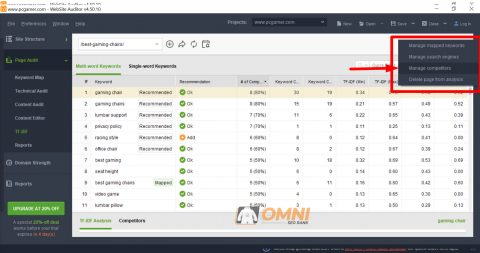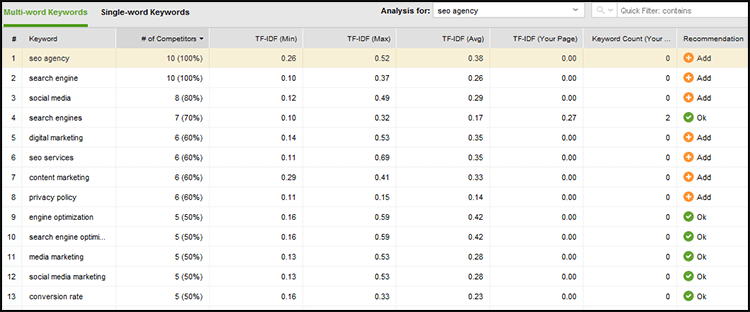

It’s not practical to keep a list of all possible placeholder values nor would it be useful, since they can vary from system to system. If the placeholders are null or an empty string, then they’re straight-forward to identify and handle, but in practice different databases might choose different values, e.g. For example, a column may be categorized as containing phone numbers, but contain a mix of authentic phone numbers and placeholders to signify missing values. One complication of trying to classify database columns is the presence of placeholder values. In practice we have dozens of such features that serve to describe a data point.
#Website auditor tf idf not working plus#
For phone numbers we might have features like “true or false - this value begins with a plus sign”, or “this value contains between 7 and 10 digits”. For example, in order to help classify emails we might generate features that say, “true or false - this value contains an symbol”, or “true or false - this value matches an email-format regex “. Many of these features are Boolean values that capture our human intuition about what’s important in determining the data type of a set of values.

In our approach toward modeling data-type in a database column, we begin by featurizing the cell-level values. Classification of data featurization of cell level values On the far-end of the complexity scale there are more free-form data types such as organization names and street addresses. A somewhat more complex data type is a phone number, which has a less uniform structure. For example, emails have a strict format, so identifying a piece of data as an email is relatively straight-forward. Data typesĭata in the wild has a range of difficulty of accurate identification. A key feature of the data we’re working with is a high occurrence of placeholder values, which introduces some interesting differences compared to NLP for human-language data. This post describes some work we’ve done at Enigma to classify tabular data using natural-language processing (NLP) techniques. Therefore, categorizing that data is a crucial step in the analysis process. These data sets come from a variety of sources and vary in areas such as data quality, completeness, and formatting conventions. At Enigma, the daily work is driven by knowledge discovery across thousands of public datasets.


 0 kommentar(er)
0 kommentar(er)
